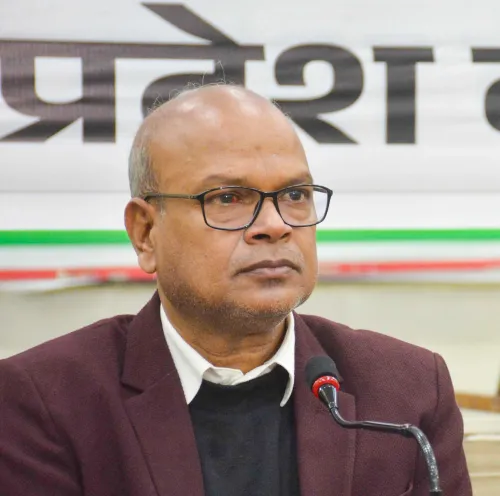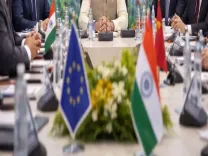Is India's Ultra-Rich Population Really Growing at 11–15% CAGR Through 2034?

Synopsis
Key Takeaways
- India's HNW and UHNW population is growing at 11–15% CAGR.
- Wealth creation and a young demographic are key drivers.
- Luxury market is seeing a shift from aspirational to elite clients.
- Top-tier clients account for a significant share of luxury spending.
- Brands must refocus on craftsmanship and intimacy to thrive.
New Delhi, July 24 (NationPress) The population of High-Net-Worth and Ultra-High-Net-Worth individuals in India is projected to expand at a CAGR of 11–15 percent through 2034, establishing itself as a crucial market for international luxury brands, according to a report released on Thursday.
With the acceleration of wealth creation and the emergence of a young, brand-savvy demographic, companies are gearing up for enhanced local engagement, as highlighted by the latest findings from Boston Consulting Group.
The trajectory of luxury is shifting towards a renewed emphasis on craftsmanship, personalization, and intimate experiences—particularly in burgeoning markets like India, where aspirations are increasingly supported by financial capability, the report stressed.
However, this report also notes a significant transformation within the luxury sector.
For the first time in over a decade, the 'Personal Luxury Goods Market' is witnessing a deceleration in growth, with expectations of flat to slightly negative performance in 2025.
The aspirational clientele, once the entry point for many into luxury, is retracting, while the top-tier consumers are expected to become the primary driver of long-term value, the report pointed out.
"The global luxury market is at a pivotal juncture—while aspirational consumers are stepping back, elite clients, comprising merely 0.1 percent of the population, account for 23 percent of luxury expenditures," the report stated.
Aspirational buyers, who previously represented 70 percent of the luxury market, have diminished in influence, losing almost 15 percentage points in market share due to rising affordability concerns, the report indicated.
Historically, luxury was reserved for a select few; however, in the pursuit of growth, much of the industry has sacrificed its essence and traded exclusivity for broader reach and stability.
The most enduring brands are those that prioritize top-tier clients—spending an average of 355 euros annually on luxury—while nurturing an underlying population of over 900,000 HNWIs growing at approximately 10 percent each year.
Revitalizing the luxury sector necessitates a return to the qualities that originally set it apart, particularly for elite clients, the report concluded.










